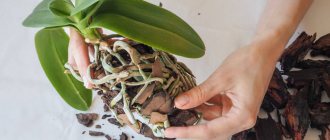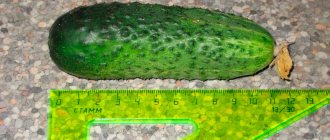Characteristics and description
Ixia is a perennial, corm plant that does not overwinter in mid-latitudes, but requires cooling of the bulbs for some time.
Brief information might look like this:
- inflorescence - spike-shaped;
- height 30-50 cm;
- flowering duration - 2-3 weeks;
- flowering place - sunny;
- growing conditions - rock garden, container;
- Flowering time: July-August-September.
Planting in open ground
Only planted large and elastic bulbs bloom in the same year
When planting Ixia in the ground, it is important to remember that it is a tropical plant and too low a temperature can kill it. Therefore, gardeners recommend:
- In warm, mild climates, bushes can be planted in the ground in the last week of April - first week of May or in November
- In mid-latitudes, it is better to plant in the second week of May (the air temperature should be at least 10-12 degrees). In the spring, cuttings are planted - tubers cut in half for propagation. You can’t plant them in winter
It is very important to choose the right place for planting, since it must be sufficiently illuminated. It is best to follow the basic recommendations:
- choose an area where there is a lot of lighting, no wind, preferably away from tall trees
- in the flowerbed, allocate a place in the foreground - thanks to this, the Ixia will be able to provide the necessary watering, and it will look impressive
- the soil should be well drained beforehand - stagnant moisture will destroy the roots of the plant
- choose loose, aerated, humus-rich soil with neutral acidity
Ixia flower
After choosing the time and place, you should begin planting the perennial. The whole process can be divided into several stages, detailed in the table.
| Planting Ixia in the soil | |
| Soil preparation | The earth is dug up in advance, freed from lumps and stones, and leveled. If the soil is very heavy, you can add river sand to it (1 bucket per 1 sq. m). |
| Fertilizing | Fertilize the soil comprehensively: per 1 sq. m add 70 grams of superphosphate, 20 grams of magnesium and 300 grams of wood ash. |
| Preparation of planting material | Only the most elastic and dense bulbs are suitable for planting. All dry and moldy specimens must be destroyed. The selected tubers should be treated with a fungicide - it will protect them from mold. |
| Creating Wells | Depressions in the soil are made at 50-80 mm. In this case, the distance between the holes should be 10-12 cm from each other if whole bulbs are planted. When propagating bulbs by division, they are planted in the ground to a depth of 4-5 cm. |
| Disembarkation | It is advisable to pour a handful of river sand into each hole - it ensures soil drainage. Corms are placed in the prepared holes and carefully sprinkled with loose soil. Immediately mulch the soil to 2-3 cm. |
| Watering | The planted tubers are not watered. The first time this can be done only after 15-18 days, when the sprouts are already visible. |
It should be remembered that in the fall you can plant Ixia for wintering only in the warm southern regions and only with corms - the divisions are planted in the spring, since they are not able to survive even a slight cold snap.
Experienced gardeners recommend regularly changing the planting location of Ixia - this will allow it to become resistant to diseases and pests.
Types and varieties
Every year the varietal diversity increases. This not only adds variety, but also complicates the use of flowers in landscape design.
If previously it was believed that Ixia blooms in late summer, early autumn, then modern varieties have “accelerated” and its flowering in early summer is quite possible.
This imposes its own nuances when creating an estate of continuous flowering, as well as planting in mobile, container flower beds.
The color range is also varied. With its help you can create incredibly beautiful paintings.
You can select varieties depending on color and shade approximately like this:
- milky white - “Giant”;
- blue with white border - “Blue Bird”;
- scarlet - “Castor”;
- carmine red - “Mabel”;
- red brick - “Vulcan”;
- red with white border - “Early Surprise”;
- pink - “Rose Emperor”;
- cream - “Hogarth”;
- yellow in different shades - “Holland's Glory” and “Marquette”.
Types of star beauty Ixia
In landscape design, Ixias are planted in groups of several varieties. This allows you to achieve wonderful results. But there are also those who limit themselves to plants of one variety. Tropical beauty allows you to create masterpieces of landscape design.
Fortunately there is plenty to choose from. It is known that in nature there are about two dozen species and even more varieties and hybrid varieties of Ixia
. Flower growers are often offered to purchase hybrid varieties in mixed form.
Ixia bulbous flowers - video
Ixia greenflorum
Green-flowered ixia (Ixia viridiflora) is endowed with an unusual color.
A significant number of inflorescences find shelter on a thin stem. There are often more than a dozen of them. A flower of 6 symmetrical petals with a sharp end has a striking difference - a dark spot in the center.
Despite the small number of flowers, the decorative quality of this species is created by their quantity.
The delicate green buds of the green-flowered Ixia open in early June. The length of the peduncle can reach 50 cm.
PERENNIAL FLOWERS!
Galtonia Yucca garden Nerine flower or spider lily
Ixia Hymenocallis pleasant
Hymenocallis pleasant or Ixia Hymenocallis early stands out from other varieties due to its snow-white color and unusual and complex structure of the inflorescence. The inflorescence has secondary petals, arched in shape. The peduncle rises 70 cm from the ground surface.
Flowers of this species emit a rich, slightly tart aroma, which attracts butterflies and bees.
Ixia spotted
Spotted ixia (Ixia maculata) is endowed with larger inflorescences with rounded petals.
The inflorescences open widely on a peduncle 20 cm long. The dark background of the petals is decorated with inclusions, and a light edging is revealed along the trim of the throat.
The spotted Ixia is a beautiful and exotic species. The plant is overgrown with dense, narrow-lanced foliage that supports the peduncle.
Ixia hybrid
Hybrid ixia (Ixia hybrida) differs from other varieties in a significant number of medium-sized inflorescences.
The color of the petals can be cream, pink, white, yellow, lilac or purple. This variety cannot boast of height (35-45 cm), but the riot of colors of the inflorescences completely hides this drawback.
It seems that nature itself created a delicate and original bouquet, stringing about 12 beautiful flowers onto a thin peduncle.
Orange Ixia
Ixia orange is painted in a bright orange-yellow color. The petals of the inflorescence have rounded edges, and the flower itself is in a half-open state. This is a dwarf variety of Ixia, which does not exceed 20 cm in height.
On a low peduncle there is a significant number of flowers, brightly colored with a dark red central part.
CHOOSE BEAUTIFUL FLOWERS!
Lantana Weigela Hydrangea
Use in landscape design
Buying planting material is not at all difficult. Having selected single-color or multi-colored varieties, the florist draws a picture in his imagination or on paper and tries to recreate it.
When choosing a mixture of colors, height, and depth of tone, you should take into account the nuance that 5-10 bulbs will not create a picture or impression at all. Ixia is a flower for group planting.
If you are going to create a spot, you will need at least 40 bulbs, this is the only way this plant will be on trend.
You also need to take into account the fact that this is an outbreak plant. It takes a long time to rise, but gives away its beauty very quickly.
Description of Ixia flower
Ixia
Ixia is a native of Africa that resembles an iris. The stem can reach more than half a meter in height. (See photo) It is thin and narrow, and there are flower stalks at the end. The flowers have different shades, which darken closer to the middle, sometimes even black. Ixia blooms from late May to early June for about twenty days, and only in sunny weather.
The peculiarity of this plant is that in bad weather and at night the flower curls up.
Ixia has a pleasant and bright aroma that attracts insects.
There are quite a large number of varieties of Ixia, especially well-known are Ixia green, Far Eastern, spotted and hybrid, which also has many varieties: blue bird, volcano, castor, maybelle and many others.
Favorable days for planting
Ixia is a plant that needs to be planted only in the spring, since it cannot withstand freezing. However, if it is possible to place the bulbs planted in pots in a frost-free basement, then flower growers do just that.
The favorable period for spring planting occurs at the moment when the earth is completely ready to accept Ixia bulbs. The air temperature in spring very often varies from warming up to zero at night, but the heated soil no longer cools down so quickly.
In order to plant the bulbs in a timely manner, you should wait until the soil temperature is within 10-11 ᵒC. If the time is not chosen correctly and the green cone has already appeared from the ground, then during return frosts the ixia should be covered, otherwise the frost will destroy the green part and a new one will not grow.
You also need to be careful about high temperatures. Too warm soils inhibit the formation of the root system; the plant grows due to the supply of nutrients from the bulb. This creates an imbalance and the appearance of daughter bulbs may be in smaller numbers.
When choosing a planting time, you should take into account that the faster the bulbs begin to grow, the faster flowering will occur.
Experienced flower growers plant at different times, but manage to carry out various manipulations that allow them to extend the flowering period, even within the same variety. You can read about the technology below.
Healthy! When choosing favorable days according to the lunar calendar, you should give preference to the waxing Moon and the period when the luminary is in the fertile sign of Scorpio, Cancer, Pisces.
Description of the plant
Carl Linnaeus was involved in the classification and description of Ixia, defining it as a perennial herbaceous plant of the Iris (Kasatikov) family. In total, according to various sources, there are from 40 to 60 species. Plants can reach a height of 50-60 cm. The fragrant flowers of Ixia are collected in a spike-shaped inflorescence. Each flower consists of 6 petals, forming a bud in the shape of an actinomorphic bell, measuring from 2.5 to 5 cm. One inflorescence can contain up to 10 flowers of white, yellow, pink, red color, with a spot of a different color at the place of attachment of the petal. The peduncle is very thin. Flowering begins in July (in warm regions from June) and continues for a month. The root system has a corm-like structure. The leaves are green, long, sword-shaped.
Preparing the landing site
When choosing a place for planting, you should take into account that only the first plans are suitable for Ixia. This is due to the fact that she:
- photophilous;
- not tall;
- water-loving.
You can also choose a container as a landing site. In this case, it should be taken into account that until the very moment of flowering, this container should be in a completely sunny place, without a hint of shade.
Another special requirement when planting Ixia is the requirement for soil fertility. The bulb is small and in a short time it should have time to:
- will take root;
- sprout;
- plant a peduncle;
- please with flowering;
- set a flowering point for next year;
- create a nest of daughter bulbs.
All these requirements leave their mark and require very nutritious soils. If you cannot prepare the soil yourself, then you should use professional soil for bulbous plants. Such soils are usually:
- highly nutritious;
- have a light composition;
- balanced in acidity;
- tested for pathogenic microorganisms and pests;
- conduct water and air well.
Planting Ixia
It is best to plant the plant in the spring, when it is warm and in well-warmed soil. Since planting is done with a bulb, it is required that the soil be warm (at least +15C) not only in the top layer, but much deeper, up to 12 cm. To speed up the process, you can remove the top layer and scatter it in the sun, and sprinkle it after planting bulbs with warm soil. An even simpler method is to pre-water the beds with boiling water.
It is also permissible to plant Ixia in the fall, but only in regions with mild, snowy winters and with obligatory cover with a thick heat-saving layer (mulch). At the same time, it needs to be buried more than 10 cm, otherwise even a shelter will not save the bulb from freezing. After the snow melts in the spring, the mulch should be immediately raked or swept to the side with a broom.
Choosing a landing site
The requirements for growing Ixias start with the right location and stem from its tropical origins. They are quite tough, especially with regard to lighting and moisture. Even a lacy shimmering shadow is extremely undesirable for this culture, which prefers places open to the sun. The moisture capacity of the soil should be such that water does not stagnate in it either after rain or after watering. Like all bulbous plants, the plant is easily affected by rot. There is a seeming contradiction here, since Ixia loves water very much and drinks it copiously. But the water must be fresh, not stagnant, so good drainage must be ensured.
Site preparation
If the soil in the area is heavy, it is recommended to add sand. It is added at the digging stage when preparing the site. Usually its volume is calculated from the following proportions: a bucket of sand per square meter of land. In addition, the soil must be fertilized immediately. To do this, before digging the soil, fertilizers are evenly distributed over its surface, for which you can use well-rotted organic matter or a mineral complex with the addition of wood ash. After this, digging is carried out with the maximum possible transfer of soil.
Landing technology
When choosing a planting technology, you can choose two options:
- Planting bulbs in the open ground of a flower garden;
- Planting in containers or pots.
In order not to make a mistake in the selected planting material, it should be carefully examined. A good quality tuber should be:
- clean;
- dry;
- dense;
- not damaged;
- no signs of mold;
- not sprouted.
Such a tuber, planted in soil or a container, will guarantee abundant flowering and the presence of daughter bulbs.
Planting in open ground
This planting should be done in the spring.
If the soil has already warmed up sufficiently by the time of planting, then the bulbs can also be warmed up after cooling, leaving them at room temperature. If the soil is cold, then additional heating will produce a temperature shock and the plant, which has begun the growing season, will stop growing, or may even freeze and die.
Taking this into account, you should use the following rule: “Warm soil is good for any bulb, cold soil is good only for cold ones.”
When choosing a planting depth, you must use the same formula as for any bulbous plants: “The depth is equal to three times the height of the bulb itself.”
Having chosen a planting site and made a hole, there is no point in planting the bulbs in one line, as they will not look that way; it is better to plant them in a large group.
The planting technology may be as follows:
- pour clean, coarse sand into the bottom of the hole, this will protect the bulbs from rotting;
- lay out the bulbs, bottom down, at a distance of 4-6 cm;
- lightly compact the bulbs, pressing them at the base;
- fill with freshly prepared nutrient mixture or purchased soil for bulbous plants;
- we compact the plantings;
- Do not water with cold water.
Planting in pots and tubs
Ixia can be planted in containers, pots and tubs both in spring and autumn.
No matter what time you choose, the technology will be no different. However, if planting is carried out in the fall, then the pots should be placed in the basement and kept there until stable positive spring temperatures.
If planting is carried out in the spring, for loggias, balconies, terraces, then it should also be placed in the open air if return frosts are not possible.
The landing technology is as follows:
- drainage is placed at the bottom of the tub;
- a third is filled with soil mixture;
- bulbs are laid with distances between them of 1.5-2 cm;
- the soil mixture is poured;
- the plantings are slightly compacted.
Preparing bulbs for planting
To ensure long-lasting flowering, heated bulbs are planted in some tubs in a dry place, some in a moist substrate, and some simply from the refrigerator. In all three cases, the rate of germination will be different, and the timing of flowering will shift.
Dry germination does not impose any special features. It is enough to remove the bulbs from the refrigerator and leave them at room temperature for 1.5-2 weeks.
Wet germination has its own nuances. In this case, the bulbs should be laid out on a damp cloth and placed in a warm place with mandatory daily ventilation.
As soon as the bulbs wake up, and this will be visible from the growth point, they need to be planted. Overgrowth should not be allowed, as this will have a bad effect on the flowering of the plant.
Growing from seeds
Since all varieties that are available for purchase are Ixia hybrida, the collected seeds will give splitting characteristics and there will be very few similar to the parent forms.
Growing Ixia from seeds is not practiced by flower growers, but is used only by breeders to develop new varieties and hybrids.
Plant care
Ixia grows well in open ground. After preparing the soil and planting, it requires no effort other than regular and moderate watering. If after planting Ixia blooms and grows poorly, it is necessary to feed it with a minimum amount of a mixture of fertilizers. The mixture should include manure, ash and mineral fertilizers for bulbous plants.
Watering
The plant should be watered with warm water moderately but regularly. Limp leaves may indicate a lack of moisture; excess and stagnation of water leads to rotting of the roots. Particular attention should be paid to the plant during the budding period. On hot days it is advisable to spray the plant. Do not plant on waterlogged soils near a pond.
Fertilizer
The plant is very responsive to fertilizers. It is better to apply organic and mineral fertilizers in turn. In early spring, when planting, the plant should be fed with organic fertilizer, and closer to the period of bud formation with mineral fertilizer.
Care
Might be interesting Orchid Dendrobium Berry Oda: planting and care, features of the variety Celosia - an exquisite fashionista in the flower garden Root parsley: features of growing the variety, benefits and harm
During the period of growth and flowering, Ixia needs:
- watering;
- feeding
The main condition for successful flowering is regular watering. Ixia does not tolerate drought, and each drying out of the soil will reduce the beauty and duration of flowering.
Ixia also does not tolerate waterlogging, so when choosing a planting site, you should not plant the bulbs in lowlands.
You need to be careful when it comes to fertilizing. For fertilizing, you should choose the following phases of the growing season:
- The beginning of leaf regrowth. At this point, 5 g of urea is diluted in five liters of water and watered;
- When the plant shows 3-4 leaves in five liters of water, dissolve: 5 g of magnesium sulfate and 10 g of potassium sulfate.
- During the budding phase, Ixia also needs feeding and it is the same as the second one.
Growing and care indoors
Proper planting and care of tigridia in open ground
Ixia can also be grown indoors. But in this case, caring for the plant will be more labor-intensive. To ensure abundant flowering, it is necessary to create artificial lighting and maintain a low temperature in the room. At first it should not exceed +5 degrees, then - no more than +13 degrees. It becomes clear that growing and caring for the plant in this case is carried out in a cold greenhouse or winter garden, but not in indoor conditions.
Planting of bulbs for forcing occurs in December-January, and already in May you can enjoy abundant flowering. Caring for Ixia occurs in the same way as for those planted in open ground.
Proper care must also be provided to the dug-out bulbs so that they survive until next year. To do this, they are dried, treated in potassium permanganate, then dried again, and then wrapped in newspaper and stored in a cool place. You can use the refrigerator for this. Flowers are often transplanted into pots for the winter, which ensures their preservation.
This exotic plant, a photo of which was presented in the article, can be grown in your garden in open ground. With proper care you can achieve abundant flowering. In this case, Ixia will wonderfully decorate your garden plot and give you a great mood.
(9 votes, average: 4.2 out of 5)
The herbaceous perennial plant Ixia is a member of the Iris family. According to information taken from various sources, there are from 40 to more than 60 different species in this genus. This plant comes from South Africa, namely the Cape region. The scientific name of this genus comes from a Greek word that means “bird glue,” referring to the sticky sap of the plant. Cultivation of this flower began in the 18th century. Today, the most widespread varieties of Ixia are hybrids; they have a common name - Ixia hybrid. At the same time, Ixia species are becoming less and less popular every year.
Reproduction
Ixia reproduces independently, by growing bulbous nests. The reproduction rate is not high, mostly 1:2.1.
In those regions where the soil does not freeze, gardeners manage to leave the bulbs in the ground, covering them with mulch.
If the soil freezes, nests are dug. This is done 45-55 days after flowering ends.
Digging is carried out in dry weather, digging up the bushes and pulling the bulbs by the green “tail” without tearing it off.
The bulbs are laid out to dry. The green mass begins to gradually turn yellow and brown. During this period, nutrients pass into the bulb and accumulate, thus allowing it to ripen.
Next comes the warming up period. After cleaning the bulbs, they are placed in boxes and placed in conditions where the temperature will be within 23-25 ᵒC.
The next period is cooling. The bulbs are re-cleaned, inspected, damaged ones and those with signs of disease are discarded, and kept at room temperature for 1-1.5 months.
Such conditions for preparing the bulbs will allow them to undergo a complex process of biochemical transformations, during which the bulb will lay flowering buds.
Autumn care and wintering
When flowering ends, there is no need to dig up the bulbs right away. They are left in the ground until the end of July. During this time, they should be saturated with nutrients for future growth. Dig up the tubers and let them dry a little. After this, place in a strong solution of potassium permanganate for 20-30 minutes. Take them out and dry them. Place in a cardboard box or wooden box. Place in a dry, cool place for the winter. The vegetable compartment of the refrigerator is suitable. In February, Ixia can be planted in a pot for forcing. This will allow you to get beautiful flowers much earlier, when there is still snow outside the windows.
In regions where winter temperatures do not drop below 0 degrees, bulbs do not need to be dug up. Trim faded leaves and stems. Cover the surface of the area with dry soil, sawdust, and dry leaves.
Storage and preparation for wintering
Planting material is calibrated into fractions, and the storage process is carried out separately.
The storage location must correspond to temperature limits of 6-8 ᵒC and low humidity.
At home, such a place can be in the basement, cold closet, cellar, or household refrigerator.
It is best to store bulbs in paper or linen bags. Having placed the bulbs in them, they should be covered with dry sawdust, peat or stove ash on top. Such an environment will not allow fungi and bacteria to develop and the bulbs will remain undamaged.
If the bulbs are left without a substrate, they will dry out by spring.
In winter, an inspection is done 2-3 times. To do this, there is no need to remove the bulbs from the bag and re-examine them, just stick your hand in there. If your hand does not feel wet rotting, then the storage process is proceeding normally. If the substrate is dry to the touch (your hand is dusty), then it should be slightly moistened with water.
If your hand feels excessive moisture, you need to urgently correct the situation. To do this, all content is extracted and reviewed. Rotten bulbs are discarded, the rest are dried and put back into storage.
Ixia propagation methods
An effective way to propagate Ixia is by dividing the tubers.
Due to the fact that one tuber can have several root buds, it can be separated with a sharp knife. There may be 2-3 such divisions. The main thing is that there is at least one bud on each part. The cut is sprinkled with ash.
Photo of Ixia bulbs
A distance of 3-6 cm is maintained between planting holes, sufficient for the normal development and proximity of plants.
Only the spring months are suitable for this method of reproduction.
It is recommended to lay a little mulch on top.
Immediately after planting, watering is not carried out. Moisten the planted bulbs after 15 days. By this time the sprouts will emerge. Dividing tubers is an effective method, but the plant may bloom late, after 2-3 years.
Diseases and pests of Ixia
Tropicana Ixia is not susceptible to disease, provided the growth site is correctly selected for it.
It is better if it is a hill in an open sunny area. The main enemy of Ixia is stagnation of moisture, which will provoke the appearance of mold on the tubers. To avoid this, the landing site must be elevated and the soil must be permeable. Clay soil is mixed with coarse river sand.
Spring treatment of tubers with fungicides will help maintain healthy roots.
Features of Ixia
Ixia is a corm plant, the height of which can vary from 0.15 to 0.7 m. The shoots are thin. The narrow, linear, long leaf blades are xiphoid and biseriate. Approximately 10 wide open flowers grow on a peduncle, reaching from 25 to 50 mm in diameter. The flowers consist of 6 petals of red, yellow, white or pink, while closer to the middle the color becomes more saturated and dark, for example: black, dark red or brown. Flowering occurs in the last weeks of spring or the first weeks of summer. At night, as well as in cloudy weather, the flowers of this plant do not open. The flowers have a not very strong, but quite pleasant smell, which is attractive to various insects, for example, bees.











